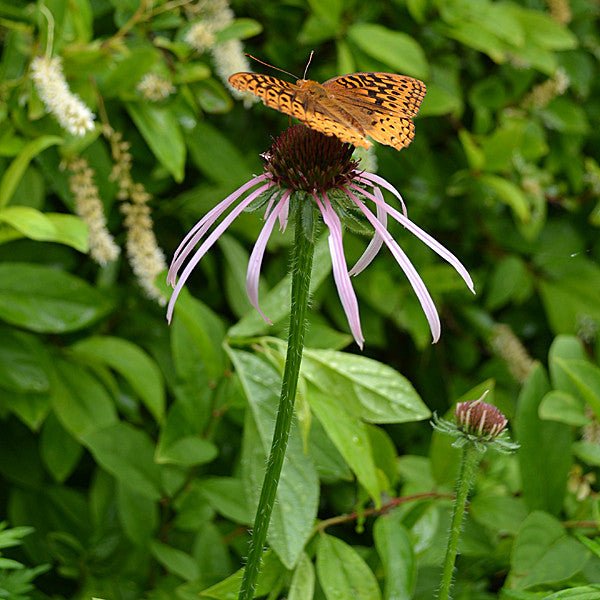Hardy, summer-flowering, North American perennial
Description: Graceful, pale purple flowers with narrow, reflexed ray florets (petals) and a conical, orange-brown disk; showy flowers attract bees and butterflies; birds eat the seeds
Habit: Single flowers rise on slender, 4' tall stems; basal leaves form clumps up to 2' wide
Culture: Prefers full sun and well-drained medium to dry soil; drought-tolerant and long-lived
Hardiness: Cold hardy to USDA Zone 3
Origin: North America
Attributes: Attracts butterflies, bees, and birds, cut flowers, deer resistant, drought tolerant
This Eastern North American species, first described as Brauneria pallida and Rudbeckia pallida by English botanist Thomas Nuttall in the early 1800s, is similar to Echinacea angustifolia, but stouter and taller. This species was illustrated in Curtis Botanical Magazine and mistakenly identified as Rudbeckia purpurea (now Echinacea purpurea). New York seedsman Thomas Bridgeman was offering Coneflowers by the 1840s. Deer are not attracted to this plant. zone3,zone4,zone5,zone6,zone7,zone8,zone9
Details
| Genus | Echinacea |
|---|---|
| Species | pallida |












